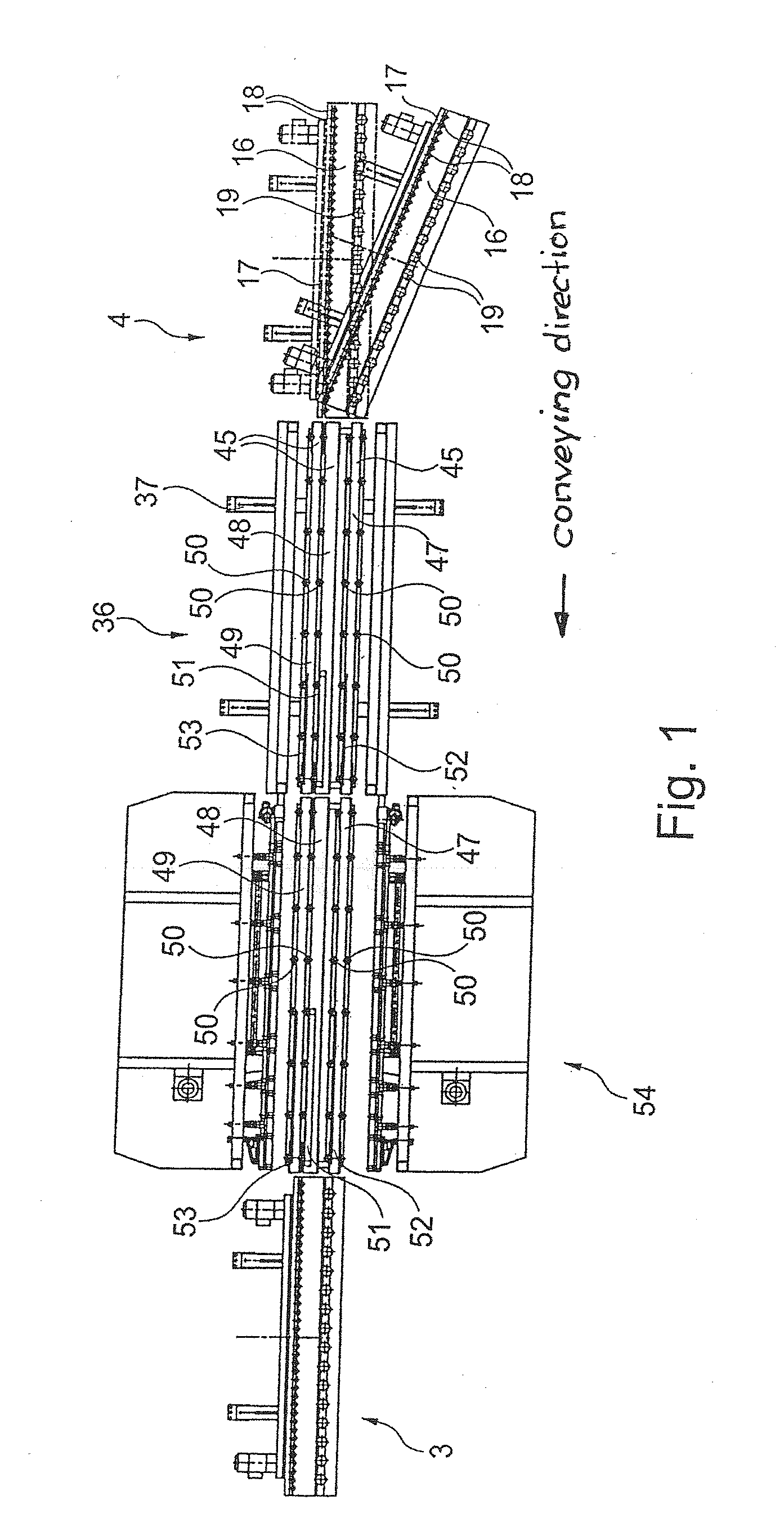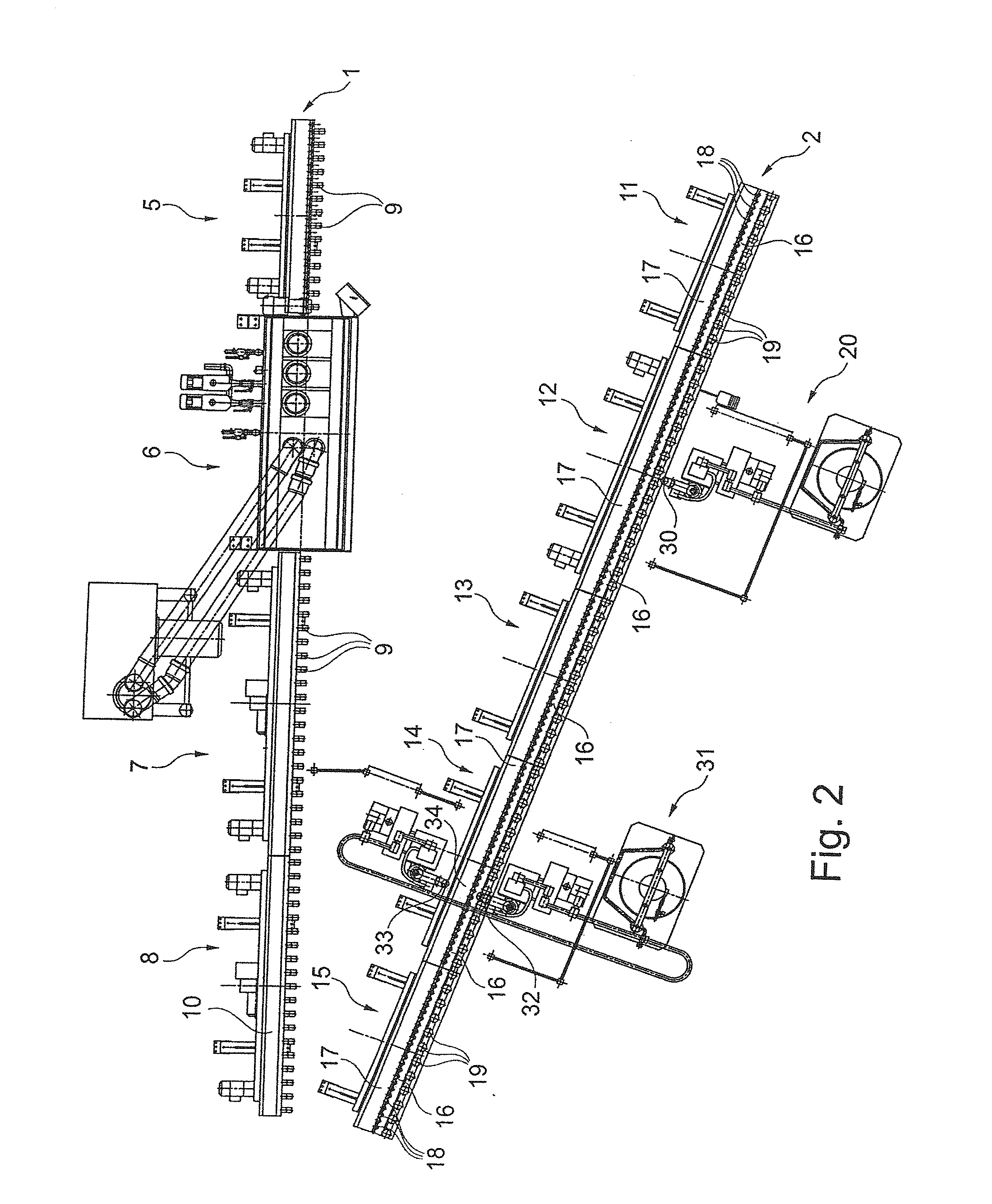Device for assembling a window sash having an integrated insulating glass pane
a technology of insulating glass panes and window sashes, which is applied in the field of assembly of window sashes, can solve the problems of unavoidable quality deficiencies, difficult heat transfer between the two glass plates, and high personnel costs, and achieves the effect of simple manner, reduced heat transfer through insulating glass panes, and convenient adaptation of devices
- Summary
- Abstract
- Description
- Claims
- Application Information
AI Technical Summary
Benefits of technology
Problems solved by technology
Method used
Image
Examples
Embodiment Construction
[0057]FIGS. 1 and 2 show, in a schematic top view, a production line for window sashes or the wings of a door having an integrated insulating glass pane. To simplify matters, only window sashes will be discussed below. However, the same applies to the wings of a door. The term “sash” is to comprise displaceable as well as pivotable sashes.
[0058]The illustration in FIG. 2 connects to the right end of the illustration in FIG. 1.
[0059]The production line has a first horizontal conveyor 1 and a second horizontal conveyor 2, which runs transversely thereto and which lead into a horizontally conveying turnout 4, to which a third horizontal conveyor 3 connects, which is arranged in alignment with the first horizontal conveyor 1. The first horizontal conveyor 1 consists of a plurality of sections, starting with a section 5, to which the individual glass plates 52, 53 are placed one after the other, of a section, which leads through a machine 6 for washing and drying the glass plates, and of...
PUM
| Property | Measurement | Unit |
|---|---|---|
| distance | aaaaa | aaaaa |
| thrust | aaaaa | aaaaa |
| area | aaaaa | aaaaa |
Abstract
Description
Claims
Application Information
 Login to View More
Login to View More - R&D
- Intellectual Property
- Life Sciences
- Materials
- Tech Scout
- Unparalleled Data Quality
- Higher Quality Content
- 60% Fewer Hallucinations
Browse by: Latest US Patents, China's latest patents, Technical Efficacy Thesaurus, Application Domain, Technology Topic, Popular Technical Reports.
© 2025 PatSnap. All rights reserved.Legal|Privacy policy|Modern Slavery Act Transparency Statement|Sitemap|About US| Contact US: help@patsnap.com



